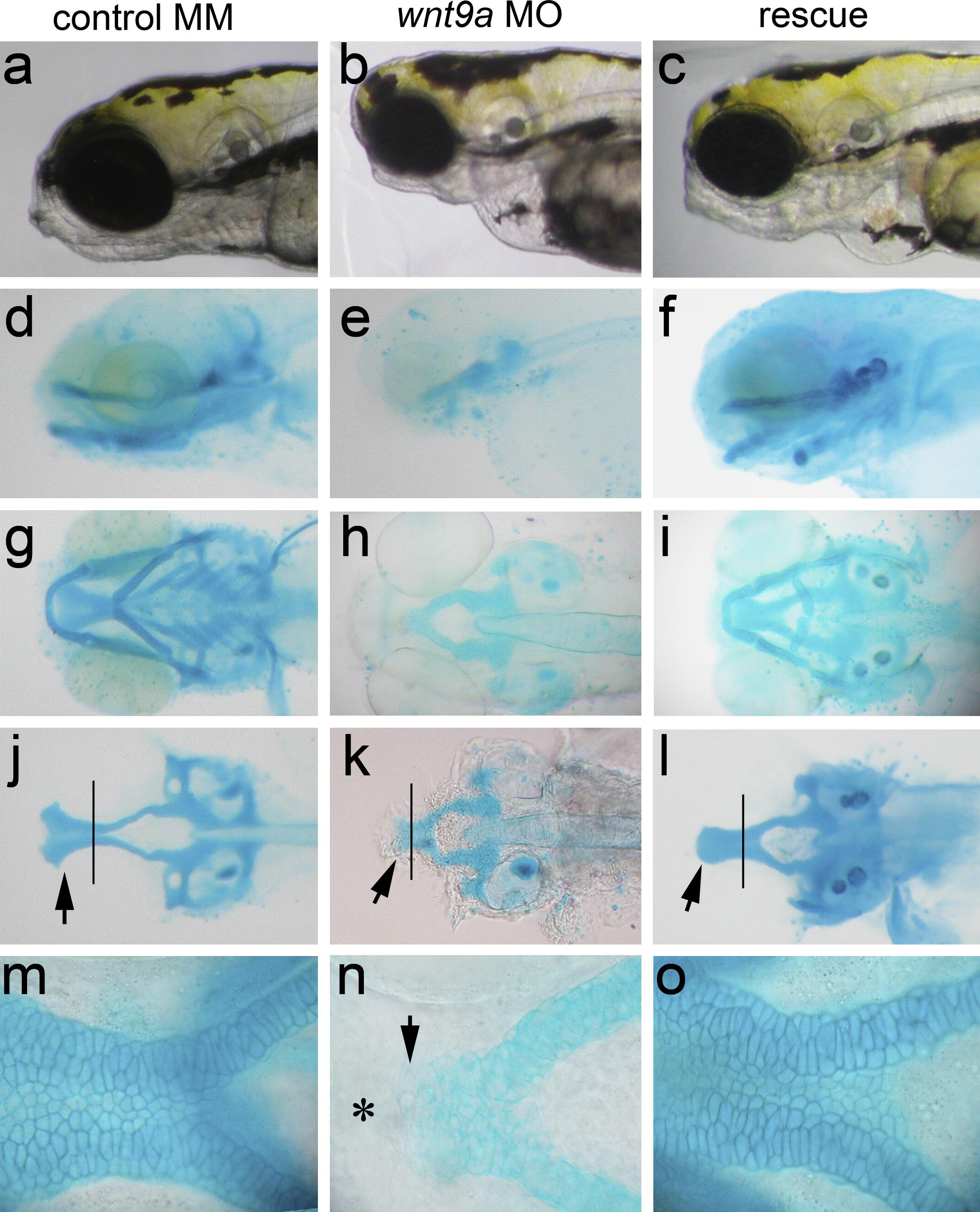Fig. 3 Knockdown of wnt9a profoundly disrupts craniofacial development. Live embryo morphology (a–c) and Alcian blue cartilage stain (d–o). Lateral view (a–f), ventral view (g–i), ventral view with lower jaw dissected away (j–l), taken at 10× magnification. View of the ethmoid plate of embryos in (g–i) at 40× magnification (m–o). Anterior is to the left in all views. Embryos injected with wnt9a mismatch control (MM) (a, d, g, j and m), translation-blocking morpholino (MO) (b, e, h, k and n), and wnt9a MO with wnt9a full-length capped mRNA rescue at 4 dpf (c, f, i, l and o). Normal craniofacial morphology (a) and jaw structures are seen in embryos injected with mismatch-control morpholino, with normal lower jaw (g) and ethmoid plate (j, arrow) and lower jaw (arrow in d, j). Knockdown of wnt9a produced loss of jaw structure apparent by facial morphology (b). In the wnt9a morphant, Alcian blue staining detects formation of the medial parachordals but the lateral parachordal structures are absent (h and k). In the wnt9a morphant, the proximal trabeculae form and converge in midline but fail to elongate, and the ethmoid plate does not form (arrow, k, n), and the lower jaw is absent. When wnt9a MO is co-injected with wnt9a mRNA, the morphant phenotype is rescued, albeit not entirely wild-type (c, f, i, l and o). In the rescued animals, the ethmoid plate forms but the trabelculae fail to flair out in the distal leading edge (arrow, l). The lower jaw and the parachordals form in the rescued embryos, but the vertex of the ceratohyal points posteriorly, and the ceratobrachials are not formed. Higher magnification comparison of the trabeculae between the wnt9a morphant and the controls show that the morphant chondrocytes fail to adopt the elongated morphology and remain rounded, with abrupt cutoff anteriorly, as the trabeculae end in a stump (arrow, n). There are no cells found anterior to the cutoff (asterisk).
Reprinted from Mechanisms of Development, 128(1-2), Curtin, E., Hickey, G., Kamel, G., Davidson, A.J., and Liao, E.C., Zebrafish wnt9a is expressed in pharyngeal ectoderm and is required for palate and lower jaw development, 104-115, Copyright (2011) with permission from Elsevier. Full text @ Mech. Dev.

